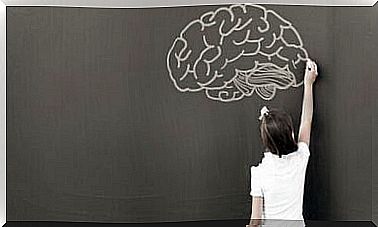Learned Helplessness: A Hopeless, Deep Hole

Learned helplessness is one of the worst holes we can fall into. It provides the perfect growth conditions for anxiety and depression. And in fact, both are a consequence and a cause of lack of assertion (“Why create conflict by saying our opinion if it has no use?”). It transforms us into empty bodies with dead souls.
This condition can be summed up with “no matter what you do, it will go wrong.” Or “no matter what you do, it does not matter, it does not lead to anything. The result will always be the same. ”
And this is where learned helplessness arises. Helplessness we have learned as a result of having tried many courses of action, and seen that they do not affect the result. Thus, we have no motivation to solve our situation.
Maybe you’re in this kind of situation. Everything you do, no matter what it is, almost always ends up being wrong, and the times it does not go wrong, you have no idea why or how it’s okay. So you can not repeat it, no matter how hard you try.
Learned helplessness causes us to give up control
Behind this unreasonable attitude, we hear things like “I am the one who judges what you do. I make the rules. ” People who cause learned helplessness in others are those who, by influencing them, make a value assessment without explanation.

So what can a person learn from being exposed to this treatment? That it is not worth making an effort, as the result is random. The feeling is that no matter what you do, you cannot control the outcome.
The lack of control over what happens to us is painful and very limiting. Because you obviously can not do anything about it.
This is often the beginning of emotional abuse. “I decide how you feel. You decide nothing. I’m in control, not you. ”
The solution is to leave, but learned helplessness makes it difficult
Martin Seligman discovered the phenomenon in the 70s. In an experiment that could not be done today because of his ethical dilemmas, Seligmann discovered that dogs that were subjected to shock no matter what they did to try to escape, ended up adopting a passive attitude towards them.
This phenomenon was quickly linked to the causes and attitudes of many people who have ended up in deep depression. Anxiety, depression and the total lack of motivation end up controlling the person’s attitudes and behavior. Eventually, they become totally passive.
So if an opportunity arises to change the situation, they will not see it, and they will miss it. Their faith and hope have disappeared because they feel that no matter what they do, no matter what direction they choose, they do not see the results they want.
This psychological phenomenon is very strong because it totally blocks our ability to act. It steals our creativity to see alternatives and solve problems. This means that we do not see the solutions to our problems. It is extremely difficult to get away from this devastating place.
Helplessness takes control of our thoughts, behaviors and emotions
Many people are unable to leave situations that hurt them. They are totally trapped by the helplessness they have learned. Helplessness that takes control of their thoughts, behaviors and emotions.
To break this growing, downward spiral, we must go to the root of the problem. We can not stay on the surface. Asking someone to leave the cage they are trapped in, saying “why do not you see the problem?” does not help.

They do not want to feel that way. They did not seek it out. Therefore, they need to understand how they ended up here. How did they end up giving up control over what happens to them? The solution is to strengthen them. Give them back control of their own lives.
A control that was lost a long time ago, stolen by the person who abused them. But their life has always been their own. They just need help to get it back. Understanding what has happened and accepting it is the first step on this path.









